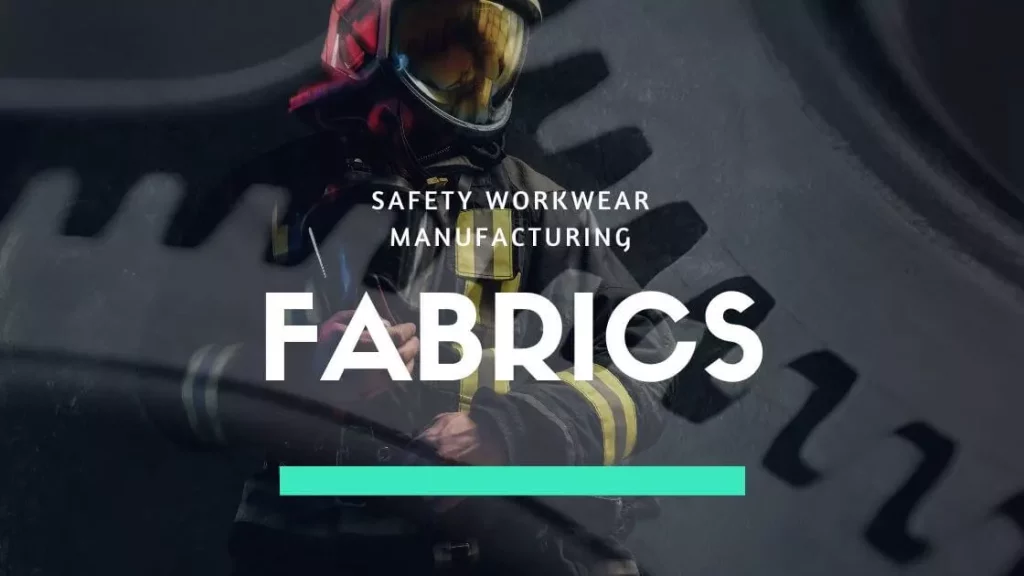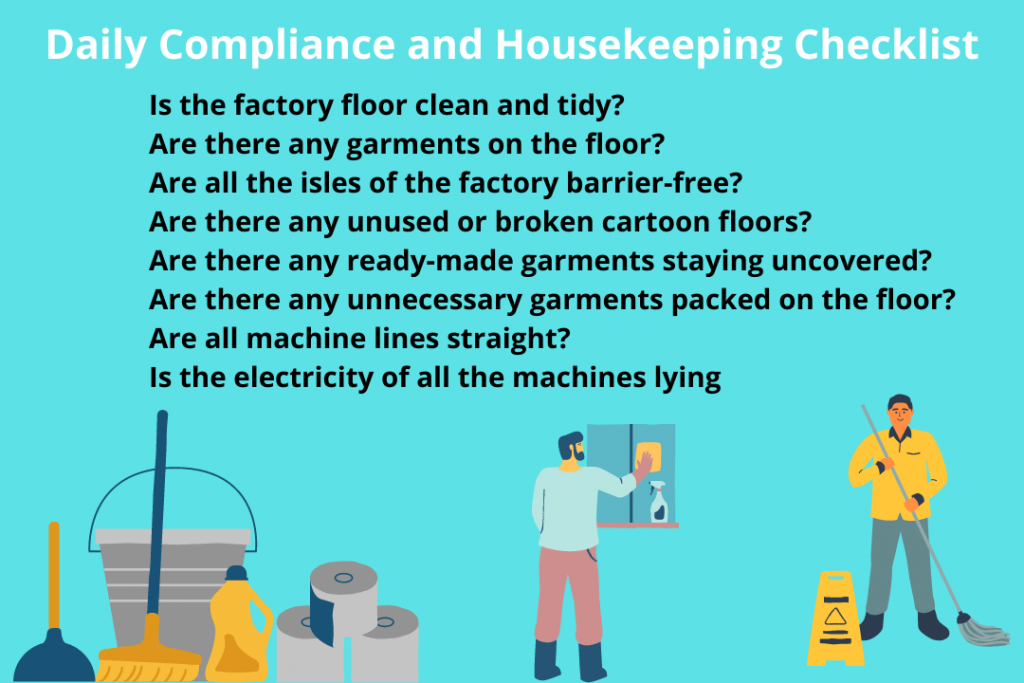When selecting the best fabric material for safety workwear, there are many factors to consider. Not only does the fabric need to be strong and durable, but it must also be comfortable and provide safety features that meet industry standards. In this blog post, we will discuss some of the best fabric materials for safety workwear and why they are a good choice for your business.

What is Safety Workwear?
Safety workwear is any type of clothing or gear that is worn to protect workers from safety hazards while on the job. This can include items such as safety glasses, gloves, hard hats, and boots. In some cases, safety workwear may also be required by law in certain industries.
There are many different types of safety workwear available on the market, and the best choice for your business will depend on the specific needs of your industry. However, some general fabric materials are well-suited for safety workwear and provide several benefits.
Best Workwear Fabrics That Ensure Quality & Comfortability
1. Cotton
Cotton is a popular choice for safety workwear because it is strong and durable. It is also absorbent, which can be a valuable safety feature in certain industries. For example, if you work in a laboratory and need to handle chemicals, cotton gloves can help protect your hands from absorption.
Cotton is also a comfortable fabric to wear, which is important for workers who need to wear safety gear for long periods. It is also relatively affordable, making it a good choice for businesses on a budget.
2. Polyester
Polyester is another popular choice for safety workwear. It is strong and resistant to tearing, making it ideal for protective clothing. Polyester is also wrinkle-resistant, which can be helpful in industries where a neat appearance is important.
Polyester is a synthetic fabric, so it may not be as breathable as cotton. However, it is usually more affordable than natural fabrics.
3. Nylon
Nylon is another synthetic fabric that is often used in safety workwear. It is strong and abrasion-resistant, making it ideal for protective clothing. Nylon is also water-resistant, which can be helpful in industries where workers are exposed to liquids.
Like polyester, nylon is not as breathable as cotton. However, it dries quickly and is usually more affordable than natural fabrics.
4. Kevlar
Kevlar is a strong synthetic fabric that is often used in safety workwear. It is heat-resistant and able to withstand high temperatures, making it ideal for workers who are exposed to flames or hot objects. Kevlar is also cut-resistant, which can be helpful in industries where workers are exposed to sharp objects.
Kevlar is a synthetic fabric, so it is not as breathable as cotton. However, it is more durable than other synthetic fabrics and can be a good choice for safety workwear.
5. Natural Fibers
Natural fibers such as wool and linen are also used in safety workwear. Wool is a durable fabric that is resistant to tearing and abrasion. It is also flame-resistant and able to withstand high temperatures. Linen is a strong fabric that is resistant to tearing and abrasion. It is also absorbent, which can be helpful in industries where workers are exposed to liquids.
Natural fibers are usually more expensive than synthetic fabrics. However, they are often more comfortable to wear and are better at regulating body temperature.
6. Blends
According to wearce.com, a safety workwear manufacturing factory in China, Many safety workwear clothing are made from blends of different fabrics. For example, a polyester-cotton blend can combine the strength of polyester with the comfort of cotton. A Kevlar-nylon blend can combine the durability of Kevlar with the water resistance of nylon.
Blends are often more expensive than single-fabric garments. However, they can provide the best combination of safety, comfort, and affordability for your business.
No matter what type of safety workwear you need for your business, there is a fabric material that will suit your needs. Choose a fabric that is durable, comfortable, and affordable to ensure the safety and quality of your workwear.
Role of Fabric Materials in Workwear
Safety
The first and most important role of safety workwear is to protect workers from safety hazards. The fabric material should be strong and durable enough to withstand the hazard, as well as comfortable to wear for long periods.
Protection from Injuries
The best safety workwear will protect workers from both minor and major injuries. The fabric material should be strong enough to withstand the hazard, as well as comfortable to wear for long periods.
Visibility
In some industries, it is also important for safety workwear to be visible. This can help workers be seen by others and avoid accidents. fabrics that are brightly colored or reflective are good choices for safety workwear.
Comfort
Comfort is also an important consideration for safety workwear. Workers who need to wear safety gear for long periods will appreciate workwear that is made from comfortable fabric materials.
Safety from Respiratory Disease
The fabric material of safety workwear should also be breathable to protect workers from respiratory disease. Workers who are exposed to dust or chemicals should choose workwear made from breathable fabrics such as cotton.
Different Types of Safety Workwear
There are many different types of safety workwear, each designed for a specific purpose. Some of the most common types of safety workwear include:
- Coveralls: Coveralls are full-body garments that protect workers from head to toe. They are often made from synthetic fabrics such as polyester or nylon.
- Jackets and Pants: Jackets and pants are usually made from durable fabrics. They can be worn over other clothing to protect workers from safety hazards.
- Vests: Vests are usually made from brightly colored fabric materials such as polyester or nylon. They help workers be seen by others and avoid accidents.
- Gloves: Gloves protect workers’ hands from safety hazards. They are often made from synthetic fabrics such as nylon or polyester.
- Boots: Boots are designed to protect workers’ feet from safety hazards. They are usually made from durable leather or synthetic materials.
- Helmets: Helmets are designed to protect workers’ heads from safety hazards. They are usually made from tough plastics such as polycarbonate.
Fabric Materials for Specific Industries
The type of safety workwear you need will depend on the industry you work in. Here are some examples of safety workwear for specific industries:
Construction
Construction workers need safety workwear that is durable and comfortable. Coveralls, jackets, and pants made construction workwear are good choices. Boots and gloves made from leather or synthetic materials are also important.
Manufacturing
Manufacturing workers need safety workwear that is comfortable and breathable. Coveralls, jackets, and pants made from cotton or polyester are good choices. Gloves made from synthetic materials such as nylon or polyester are also important.
Agriculture
Agriculture workers need safety workwear that is durable and comfortable. Coveralls, jackets, and pants made for agricultural workwear are good choices. Boots and gloves made from leather or synthetic materials are also important.
Food Service
Food service workers need safety workwear that is comfortable and breathable. Coveralls, jackets, and pants made from cotton or polyester are good choices. Gloves made from synthetic materials such as nylon or polyester are also important.
Final thoughts
When choosing safety workwear, it is important to consider the specific needs of your industry. The fabric material should be durable enough to withstand the hazard, as well as comfortable to wear for long periods.
Choose safety workwear that will protect you from both minor and major injuries. And finally, make sure the safety workwear is visible if you work in an industry where visibility is important. With these considerations in mind, you can choose the best safety workwear for your needs.


